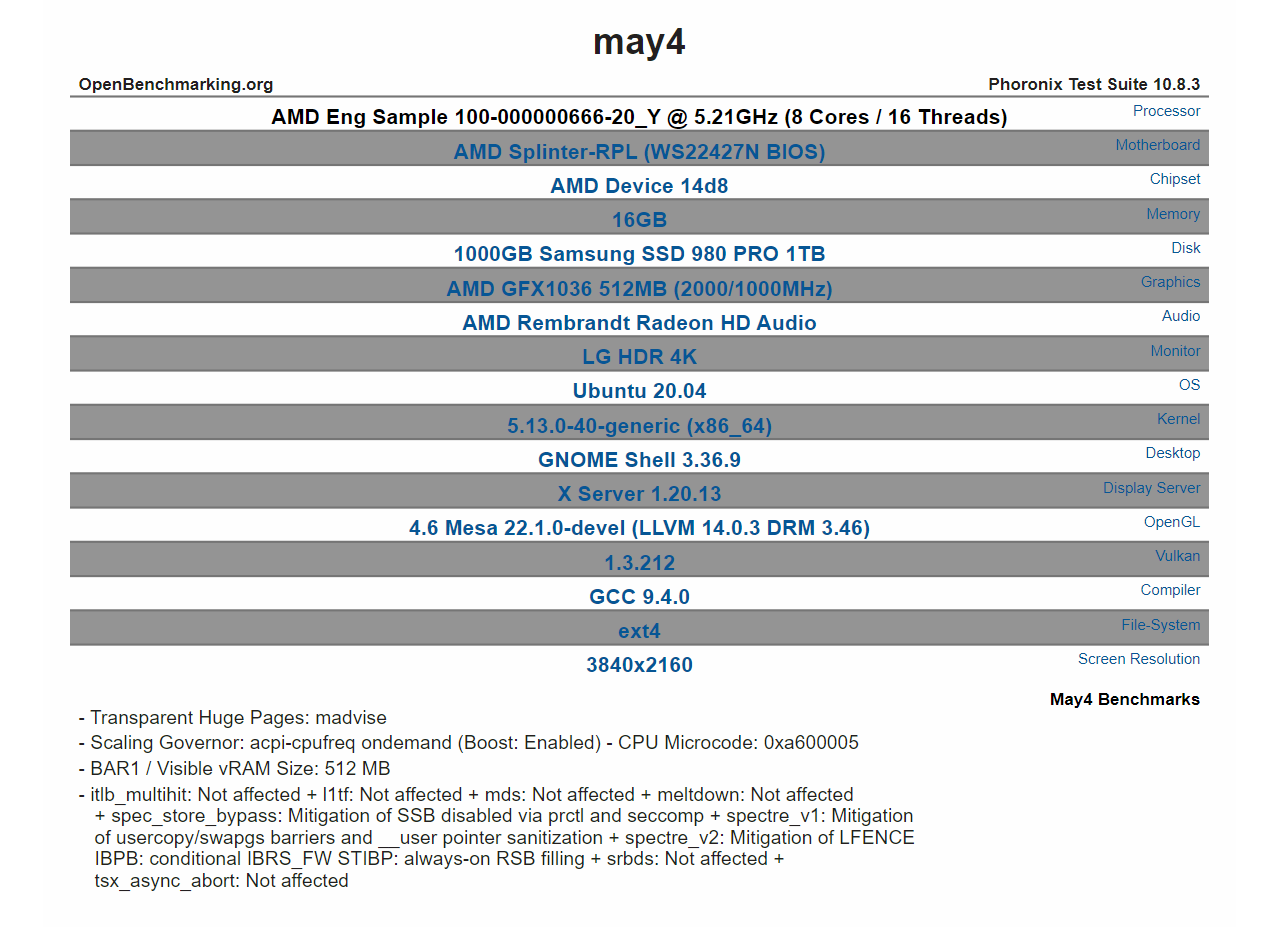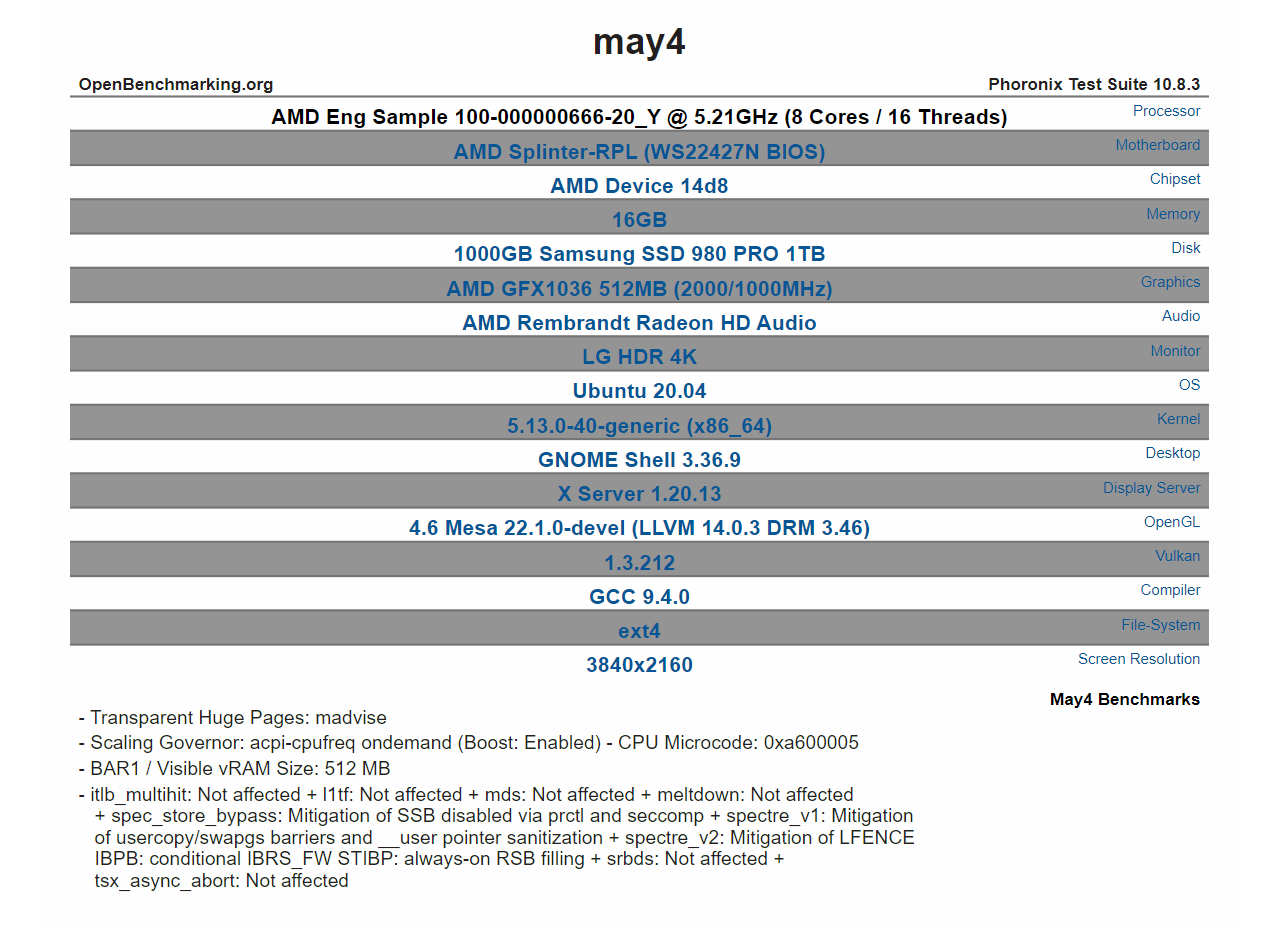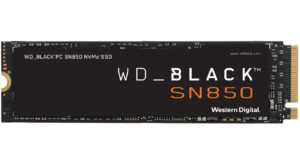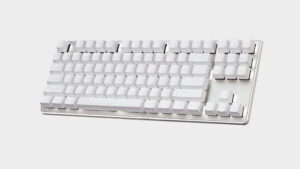AMD's Zen 4 CPUs aren't expected until the second half of the year, but the leaks are already rolling in earnest, with the latest spotted by Petykemano (via Tom's Hardware) on the OpenBenchmarking site. The entry for the Phoronix benchmark sees an AMD engineering sample divulging some interesting tidbits about AMD's follow-up to Zen 3, including the fact that it is running at 5.21GHz, is an 8-core, 16-thread chip, and that it boasts integrated graphics in the form of the AMD GFX1036.
The original entry on OpenBenchmarking.org has since been removed, or at least hidden from prying eyes, although the power of the Wayback Machine means that it's still available if you fancy taking a look yourself. The entry for the Zen 4 chip was captured on May 9.
The CPU is identified as an “AMD Eng Sample 100-000000666-20_Y”, although assuming that this follows a similar naming scheme as the existing Zen 3 chips, the 8-core, 16-thread configuration would logically make it the Ryzen 7 7800X. The fact that it has integrated graphics could also suggest that we're looking at a Ryzen 7 7800G here instead, although AMD could change its naming conventions if it has more APUs this time around.
That 5.21GHz clock speed is notable as it makes it a faster offering than anything has available from this generation, which tops out at 4.9GHz with the Ryzen 9 5950X. For comparison, the Ryzen 7 5800X, the chip that this engineering sample would appear to replace, has a maximum boost clock of 4.7GHz. A 500MHz boost is nothing to be sniffed at in this industry and, together with new architectural and process node improvements, this could lead to a serious performance jump for Zen 4 over the existing Zen 3 chips.
Zen 4 is being produced using TSMC's N5 (5nm) production process, which promises improved power efficiency and higher frequencies. This helps explains the higher clock speed, although as an engineering sample, there are no guarantees about the speed of the launched chips. This is just an indication of what it potentially can achieve.
It is worth mentioning, however, that while we can't trust the clock speeds of an engineering sample, they're often tested with lower frequencies than release chips. Make of that what you will.


Best gaming PC: The top pre-built machines from the pros
Best gaming laptop: Perfect notebooks for mobile gaming
The benchmark results themselves don't divulge much in the way of CPU performance though, and instead are focused on the AMD GFX1036 iGPU. There's no info on core counts but does reveal a clock frequency between 1000MHz and 2000MHz and that is access to 512MB of what you can assume is system memory.
The naming would also peg this as an RDNA 2 GPU, which is great news as this is the architecture found in the Steam Deck, PS5, and Xbox Series S/X, as well as in AMD's latest Ryzen 6000 mobile processors. If you're looking for top gaming performance, then a discrete GPU is still the way to go, but AMD's RDNA 2 iGPUs certainly has plenty of potential for more modest gaming.
It's still early days for Zen 4, but this is a good sign that AMD is on track to deliver Zen 4 by the end of the year. And if this engineering sample is anything to go by, it's looking like it's going to be worth the wait.
- "
- 7
- 9
- About
- access
- achieve
- Although
- AMD
- Anything
- architectural
- architecture
- Archive
- around
- available
- Benchmark
- change
- chip
- Chips
- comparison
- Conventions
- could
- CPU
- credit
- Database
- deliver
- Early
- efficiency
- Engineering
- focused
- follows
- form
- future
- Gaming
- good
- GPU
- graphics
- great
- here
- hidden
- higher
- HTTPS
- image
- Improved
- Including
- industry
- info
- IT
- jump
- latest
- lead
- Leaks
- machine
- Machines
- MAKES
- maximum
- May
- Mobile
- more
- news
- notebooks
- offering
- original
- perfect
- performance
- Plenty
- potential
- power
- Process
- Produced
- Production
- ps5
- RE
- release
- Results
- running
- s
- scheme
- sees
- Series
- similar
- speed
- Steam
- system
- taking
- test
- The
- time
- together
- top
- track
- Trust
- wait
- What
- worth
- xbox
- year
- yourself












